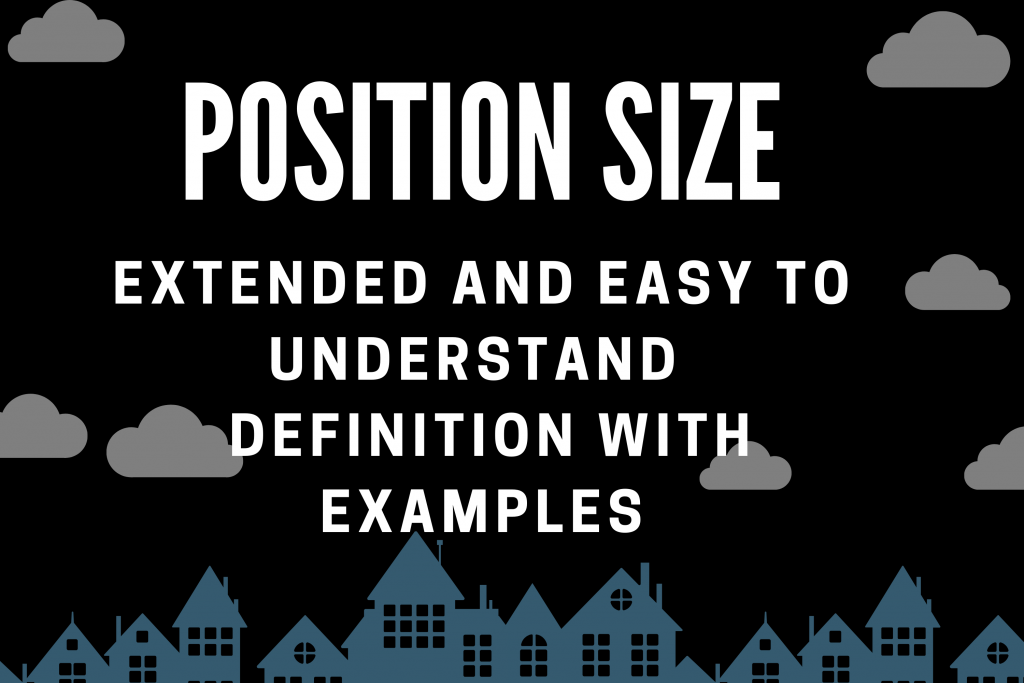What is position size?
The position size is the total number of shares an investor owns or is willing to trade in a stock. You must take into account the risk tolerance and total account size when determining your position size.
Types of positions
1. Long position
A long position is a position where an investor buys shares of stock hoping to sell them later for a profit. An investor anticipates an increase in the price for the near term or long term. For this reason, he/she decides to buy shares in a stock and sell them later after the price has gone up.
The profit is the difference between how much the investor paid to acquire the stock and the sale price. The price does not always move in the anticipated direction. For this reason, investors are advised to protect themselves and allocate their assets according to movements in the market.
Investors make money only if the price moves up and lose it if the opposite happens.
Example of a position size in a long position
Let’s say that there is a stock that is trading at $2 per share. You decided to go long on it. So, you bought 100 shares at $2 per share. This trade will cost you $200 in total. you anticipate that the price will go. The 100 shares will be your position size.
After two weeks, the price jumped to $3.50 and you decided to sell all your shares. The total price for the sale will be $350 dollars.
Now we are going to see if you made or lost money on your trade. You spent $200 to acquire 100 shares of stock. You then sold them for $350. The difference between these two prices is $150. Since what you spent is less than what you made after selling all your shares, you made money. In order words, you made $150 by going long on your trade.
2. Short position
Going short or shorting is another trading strategy where investors and traders borrow shares from their brokers and sell them. Traders anticipate a downward movement in the price of the stock.
The idea is that they can sell these shares now and buy them later at a cheaper price. The profit is the difference between what they sold the stock for and the purchase price.
Investors only make money when the price decreases and lose it if the opposite happens.
Example of a position size on a short position
Let’s assume that you anticipate a particular stock to go down in the near future and it is currently trading at $3 per share. So, you decide to short 100 shares of this stock. You will borrow these 100 shares from your broker and sell them. The total prices for all shares will be $300. The 100 shares you’re shorting is your position on this trade.
A few weeks later the stock tanks to $1 per share and you decided to exit your position. Since you sold shares that are not yours in the first place, you must return them to your broker. Exiting this trade means that you will buy all shares you borrowed and return them.
If you buy those shares at $1 per share, you will spend $100 for all 100 shares you borrowed.
Now let’s see if you made or lost money on this trade. You borrowed and sold 100 shares for $300. A few weeks later, you bought the same number of shares for $100. Since the total cost is lower than the total sale, you made money. In order words, you made $200 ($300-$100) on this trade.
Final words on position size
Whether you are going long or shorting, you must avoid big positions. In order words, your success as a trader will depend on your trading strategies. By having a small position, you will avoid big losses if the stock moves against you.
In addition, a small size leaves you the money you can use to average down or average up depending on your trading style.
If you want to be a successful trader, you must learn how to optimize your position size. This will help you maximize your gains and reduce your risks in the market when the stock goes against you.









